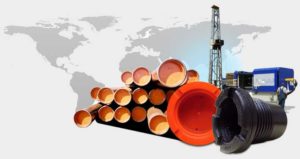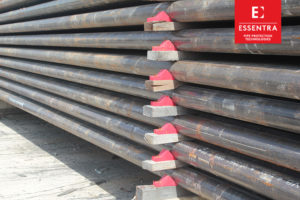When it comes to the oil and gas industry, one of the key distinctions that often comes to mind is the difference between offshore drilling and onshore drilling. While it may seem that the only variance between the two is the location—land vs. water—the truth is that there are many more factors that set them apart. Whether you are already involved in the drilling industry or considering entering this sector, it is crucial to have a comprehensive understanding of the disparities between offshore and onshore drilling.
Offshore Drilling
Offshore drilling takes place farther away from the coast in bodies of water. Oil companies set up rigs in the water to create deep wells that can remain operational for several decades. Building these offshore rigs and drilling for oil requires substantial time, monetary investment, and human resources. Offshore drilling locations usually consist of key facilities, such as crew quarters and derricks. Prioritizing pipe storage becomes even more important when planning for offshore drilling, as transporting equipment becomes significantly more challenging in a marine environment.
One of the crucial considerations in offshore drilling is ensuring that the rig remains securely anchored. To prevent the rig from floating away, it must either be tethered to a manmade platform or, in the case of deeper waters, find alternative methods to secure its position.
Onshore Drilling
Onshore drilling primarily takes place on land and is commonly found along the Atlantic coast in the United States. Coastal communities often benefit from onshore drilling activities. There are different methods of onshore drilling, including mobile onshore drilling and conventional onshore drilling.
Mobile onshore drilling involves using trucks or rigs mounted on trailers to transport equipment between various locations. In this type of drilling, effective pipe storage is crucial as equipment needs to be moved frequently. Mobile rigs have the capability to reach impressive depths of over 100,000 feet.
On the other hand, conventional onshore drilling stations an immobilized rig that can typically reach depths of around 30,000 feet into the ground. Although both methods are employed for onshore drilling, the majority of global crude oil production occurs through onshore drilling rather than offshore operations. If you are planning to venture into this industry, it is advisable to establish connections with reliable drill pipe inspection companies to ensure your equipment is properly maintained.
Onshore and Offshore Drilling Similarities
Despite their distinct characteristics, there are similarities between onshore and offshore drilling. Both methods involve the use of specific equipment, although the drilling platforms differ significantly for offshore operations. Furthermore, both onshore and offshore drilling can be used for similar types of exploratory extraction processes. However, it is essential to note that both approaches require thorough planning and significant preparation time before drilling operations can commence.
Understanding the distinctions between offshore drilling and onshore drilling is crucial for anyone involved in or considering entering the drilling industry. The differences in location, methods, equipment, and logistics make them unique in their own ways. While onshore drilling predominantly occurs on land and involves various techniques, offshore drilling takes place in bodies of water and demands extensive resources and specialized infrastructure. By recognizing these key differences, industry professionals can navigate the specific challenges and opportunities presented by each method, ensuring safe and efficient operations in the ever-evolving oil and gas sector.
MSI Pipe Protection Technologies
To take advantage of the latest innovations in technology and elevate your business to new heights, partner with MSI today. Our cutting-edge solutions and exceptional customer service make us the perfect choice for all your technology needs. Contact us now to discuss how we can help you achieve your goals and stay ahead of the competition. Don’t miss out on the opportunity to revolutionize your business with MSI.




